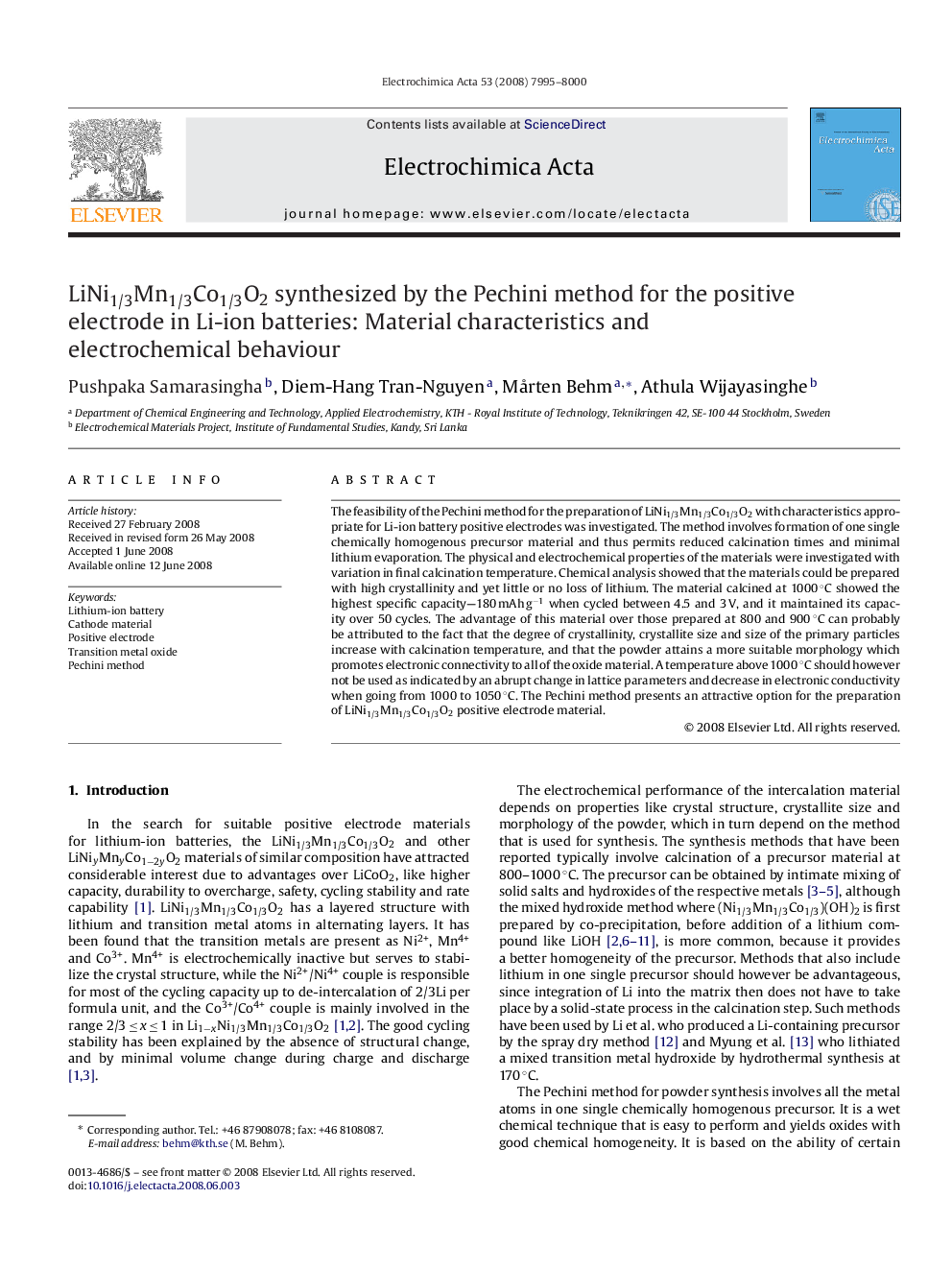| کد مقاله | کد نشریه | سال انتشار | مقاله انگلیسی | نسخه تمام متن |
|---|---|---|---|---|
| 194620 | 459796 | 2008 | 6 صفحه PDF | دانلود رایگان |

The feasibility of the Pechini method for the preparation of LiNi1/3Mn1/3Co1/3O2 with characteristics appropriate for Li-ion battery positive electrodes was investigated. The method involves formation of one single chemically homogenous precursor material and thus permits reduced calcination times and minimal lithium evaporation. The physical and electrochemical properties of the materials were investigated with variation in final calcination temperature. Chemical analysis showed that the materials could be prepared with high crystallinity and yet little or no loss of lithium. The material calcined at 1000 °C showed the highest specific capacity—180 mAh g−1 when cycled between 4.5 and 3 V, and it maintained its capacity over 50 cycles. The advantage of this material over those prepared at 800 and 900 °C can probably be attributed to the fact that the degree of crystallinity, crystallite size and size of the primary particles increase with calcination temperature, and that the powder attains a more suitable morphology which promotes electronic connectivity to all of the oxide material. A temperature above 1000 °C should however not be used as indicated by an abrupt change in lattice parameters and decrease in electronic conductivity when going from 1000 to 1050 °C. The Pechini method presents an attractive option for the preparation of LiNi1/3Mn1/3Co1/3O2 positive electrode material.
Journal: Electrochimica Acta - Volume 53, Issue 27, 15 November 2008, Pages 7995–8000